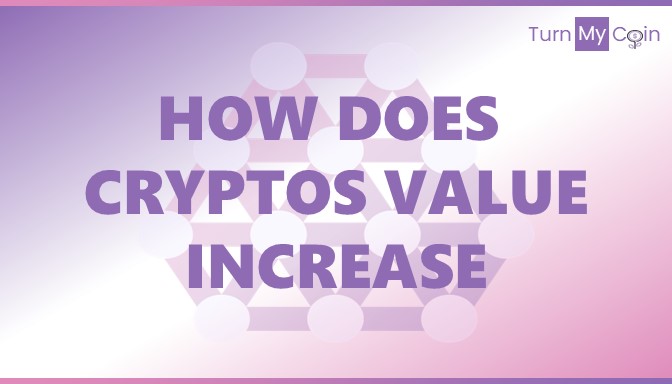Last updated on March 4th, 2024 at 12:23 pm
Introduction
Crypto! Cryptocurrencies! Crypto Assets! NFTs! People everywhere seem to be talking about these things. Be it in a professional environment or parties, people can’t get enough of conversations around Bitcoin and well, other popular cryptocurrencies. This article covers everything about Cryptocurrencies or coins that a beginner should know.
Let’s start. Cryptocurrencies are of different types. Some like Bitcoin and Ethereum that are quite popular and widely used. Some like Dogecoin, which initially started out as a meme coin but became a trend for quite some time attracting tweets from celebrity entrepreneurs like Elon Musk.
Just so you know, there are over 2 Million cryptocurrencies with a market cap of $2.3 trillion at the time of writing this article. But, for whatever reason you want to learn more about cryptocurrencies, maybe you are just curious or want to become a part of that cool group at parties, you have landed at the right place.
In this article, I’ll talk about everything you need to know about cryptocurrencies, their types, mining, and much more. Let’s dive right into it.
What are Cryptocurrencies and How are they different from Traditional currencies?

Cryptocurrencies are digitally stored currencies that don’t require the involvement of a third party (governments or banks, for instance) to regulate or manage it.
So, who maintains the track of lending, purchasing, etc.? The short answer is – users like you and me.
Cryptocurrencies are based on Blockchain technology which makes it transparent and possible to maintain a digital ledger of each and every transaction that happens.
So, let’s say 20 people have a cryptocurrency. User A sends User B a certain amount of currency. Other users in the network become responsible for validating & entering this transaction (called a “block”) to the chain (digital ledger). The process is called cryptocurrency mining (more on this later).
Any user can view this transaction at any point in time. One cannot undo or remove a block (proof of that transaction) from the network once it becomes a part of the chain.
How are cryptocurrencies different from traditional currencies?

The one major notable difference between cryptocurrencies and traditional currencies, other than the fact that they are digital/virtual, is the absence of a bank-like central authority.
Think of every limitation related to the traditional currencies and you’ll find that the only entity to blame or answer your question is a bank. Well, people can rob and hack banks (for example) while the same is not possible with cryptocurrencies. There are no limits with cryptocurrencies – be it spending, lending, or giving.
Besides, if you go to a bank and ask them to show you their records of user transactions, they will probably laugh you off because of a multitude of reasons. But, with cryptocurrency, everything is transparent.
Bitcoin, for instance, witnesses hundreds of thousands of daily transactions. The records of these transactions are publicly available and you, as a user, can even track back the network to the first Bitcoin transaction ever made in history – who made it and to whom!
History and Types of Cryptocurrency

Even though cryptocurrencies recently became popular, they are definitely not new. There have been discussions around cryptocurrencies since the early 1980s. For instance, Hashcash, B-Money, Bit Gold, etc. are a few (unsuccessful) attempts at creating cryptocurrencies or developing the underlying technology that supports modern-day cryptocurrencies (blockchain).
The first major breakthrough in cryptocurrencies was in 2008 when “Satoshi Nakamoto” released a white paper titled Bitcoin: A Peer-to-Peer Electronic Cash System which led to the foundation of (you guessed it) Bitcoin. To this date, the identity of Satoshi Nakamoto stays unknown.
Once Bitcoin went live in 2009, a horde of cryptocurrencies came out – a process that continues to this day. Right now, Bitcoin and Ethereum have the highest trading capital available in the market.
Other than Bitcoin and Ethereum, there are 16000+ cryptocurrencies (as mentioned earlier) that you can buy using different exchanges. The underlying technology behind most of these cryptocurrencies is the same except for one part – the validation process. Let’s get onto it now.
What is Consensus Mechanism?

Let’s talk about blockchain briefly before getting into consensus mechanisms.
What is blockchain? Blockchain is exactly what it sounds like – a chain of blocks.
These blocks contain details of transactions that take place in the network. A blockchain network, usually, needs the agreement of three different parties on the validity of a transaction – the sender, the receiver, and a third-party node (user). Once everyone agrees, a block is added to the network (chain of blocks) containing the details of this particular transaction.
Now, how does a non-biased third-party node confirm a transaction? There are different kinds of consensus algorithms that different cryptocurrencies use to facilitate a node to validate a transaction and add blocks to the network. For instance, Bitcoin uses PoW or Proof-of-Work consensus algorithm, Ethereum 2.0 uses Proof-of-Stake (PoS). You can refer to different types of Consensus Algorithms here.
The third-party node that confirms a transaction is called a miner (or validator)and the process is called cryptocurrency mining.
What does this validator or miner get in return? The miner gets rewards in terms of the cryptocurrency they are mining. The process of return is similar for all the other proof just the way the validation is done differs. Another example of earning rewards is through staking which is used in the Proof-of-Stake algorithm.
Suggested Reading: What is Staking of Cryptocurrencies? An amazing way to claim rewards
How Does the Value of Cryptocurrencies Fluctuate?

Because cryptocurrencies are virtual/digital currencies, many ask this question and quite a few assume that it is merely a hoax!
The price of any asset depends on its demand and its availability/abundance in the market. This is the case with cryptocurrencies.
Take Bitcoin, for example. When it launched back in 2009, it was priced at a couple of dollars and the network gave away 50 Bitcoin in reward to miners. At the time of writing this article, 1 Bitcoin costs more than $67,000.
Cryptocurrencies may or may not have a supply cap. Bitcoin, for example, has a supply cap of 21 million while Ethereum has no supply cap. The makers of a cryptocurrency define its supply cap (if any) and the rate and methods of how new coins will enter into circulation.
So, if the demand for a cryptocurrency is more than its supply, its price is bound to go up. For example, institutional investors started buying and holding Bitcoin in early 2021. This shot up the price of Bitcoin to an all-time high!
As and when the world becomes more adaptable to cryptocurrencies, their demand will increase and so will its price.
Pros & Cons of Cryptocurrencies

Cryptocurrency, right now, is in the form of a decentralized digital currency that can potentially disrupt how we have been looking at currencies for more than a century now. But it also has some disadvantages. Let’s first read the advantages of cryptocurrencies.
Advantages of Cryptocurrencies
Here are the top advantages of Cryptocurrencies.
- A Better Alternative: Banks are at the center of failures related to transactions, credit, debit, etc. Cryptocurrencies are proof that a peer-to-peer decentralized form of currency could work which doesn’t require a bank to keep track of records.
- Faster Transfers: Money transfers (domestic or international) using cryptocurrencies are much faster than the ones done via banks.
- Accessibility: To open a bank account, the law requires you to verify your identity and follow procedures. When it comes to cryptocurrencies, anyone and everyone can use cryptocurrencies at a time when they want.
- Little or Negligible Transaction Costs: The transaction costs of cryptocurrency transfers are little to none and that too, without any limits.
Disadvantages of Cryptocurrencies
- Price Fluctuation: The price of cryptocurrencies, when available for trading in public, fluctuates dramatically. This garners criticism and speculations from the public as well as economists.
- Security: There has been news about how criminals have used the decentralized cryptocurrency network to carry out activities like money laundering. I hope you can recall the Ransomware attack that affected Microsoft Windows on many systems. The hackers demanded Bitcoin as ransom.
- Sustainable: There have been questions about the sustainability of most cryptocurrencies. The most popular consensus algorithm – PoW consumes lots of power & electricity to confirm/validate a single transaction.
- Not-so-decentralized: The primary USP of cryptocurrencies is their decentralization which turns out to be incorrect (at least for the time being) in multiple different cases. For instance, just 11,000 users have more than 40% of Bitcoin in circulation.
Conclusion
Cryptocurrency, as an idea or a replacement for traditional currencies, is still in its infancy but it is promising. The blockchain technology behind cryptocurrencies has proven itself useful in a diverse range of fields.
The world of crypto is evolving each day. Non-Fungible Tokens (NFTs), for example, allow creators to create, transfer, and sell unique digital assets. There have been criticisms around the massive price fluctuations and yet, millions & billions of users trade/transact it daily. For cryptocurrencies, I guess, the best is yet to come!


